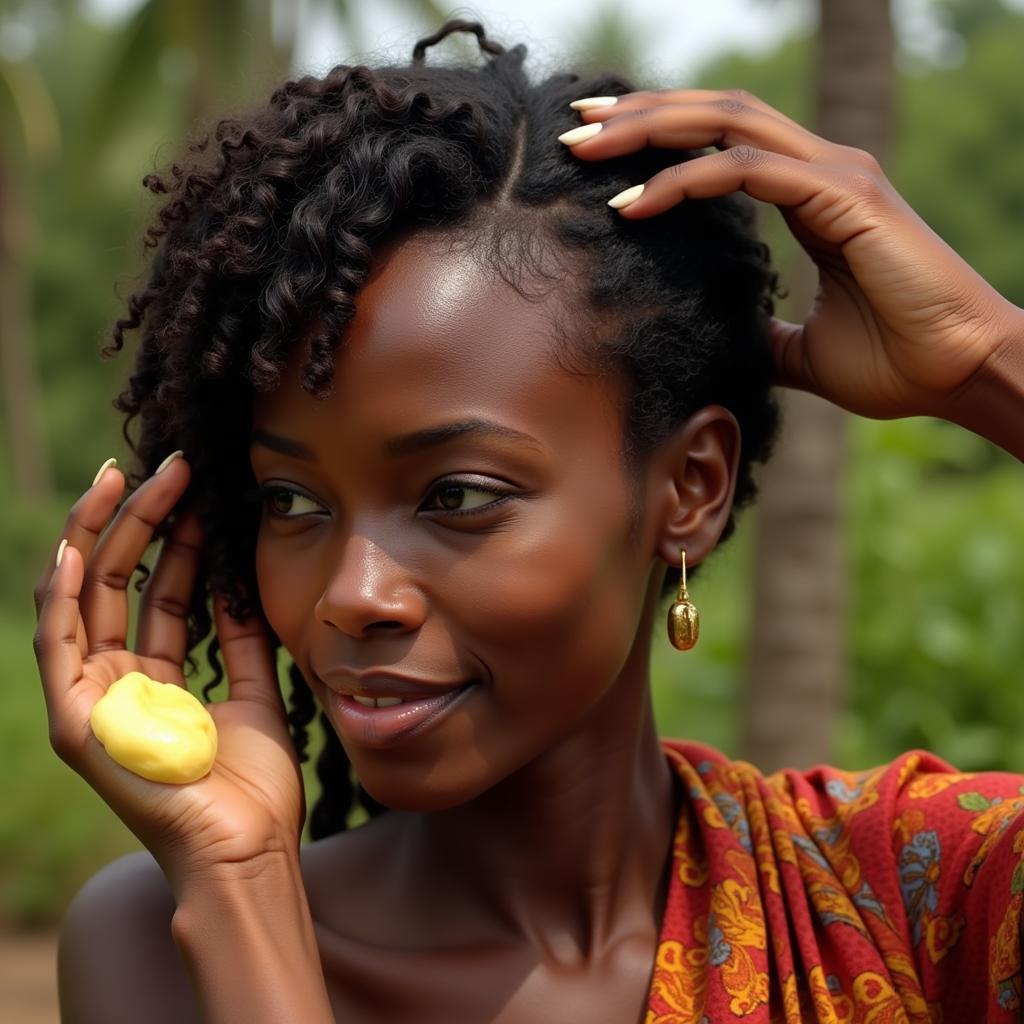African Buffalo vs. Bison: Unveiling the Differences
African Buffalo And Bison are often confused due to their similar bulky appearances and impressive horns. However, these two iconic bovine species inhabit different continents and possess distinct characteristics. This article will explore the key differences between the African buffalo and the bison, delving into their habitats, physical attributes, social behavior, and ecological roles.
Habitat and Distribution: A World Apart
The African buffalo, also known as the Cape buffalo, roams the savannahs, swamps, and forests of sub-Saharan Africa. From the sprawling grasslands of the Serengeti to the dense woodlands of the Congo Basin, these formidable creatures have adapted to a diverse range of environments. You can learn more about their distribution at african buffon. In contrast, bison are primarily found in North America and Europe. The American bison, once numbering in the tens of millions, now primarily inhabits protected areas and ranches across the United States and Canada. European bison, also known as wisent, are much rarer and are found in scattered populations throughout Eastern Europe.
While both species thrive in open grasslands, their specific habitat preferences differ. African buffalo are often found near water sources and are comfortable in densely vegetated areas. Bison, on the other hand, are better adapted to colder climates and can tolerate harsh winters.
Physical Characteristics: Horns, Humps, and Coats
One of the most noticeable differences between African buffalo and bison lies in their horn structure. African buffalo have massive, fused horns that form a characteristic “boss” on their forehead. This thick shield of bone protects their brain and serves as a formidable weapon during clashes. Learn about their imposing african buffalo size. Bison, however, have smaller, sharper horns that curve upwards. While these horns are still effective for defense, they lack the prominent boss of the African buffalo. Another distinguishing feature is the prominent hump on the shoulders of bison. This hump supports the powerful muscles used for grazing and digging in the snow. African buffalo lack this hump, possessing a more streamlined body shape.
The coats of these two bovines also differ significantly. African buffalo have short, sparse hair, ranging in color from dark brown to black. Bison, on the other hand, are covered in thick, shaggy fur that provides insulation during cold weather. The fur on their head and shoulders can be particularly long and dense, forming a distinctive mane.
Social Behavior: Herd Dynamics and Communication
Both African buffalo and bison are social animals that live in herds. However, the size and structure of these herds vary. African buffalo typically form larger herds, sometimes numbering in the hundreds or even thousands of individuals. These herds are often comprised of multiple smaller family groups led by dominant females. Bison herds, while also large, tend to be more fluid and less structured. They may split into smaller groups during certain times of the year, such as the mating season.
Their vocalizations also differ. African buffalo communicate with a variety of grunts, bellows, and snorts. Bison, on the other hand, are known for their deep, resonant bellows that can be heard over long distances.
Are African Buffalo More Aggressive Than Bison?
While both species are capable of aggression, African buffalo are considered more dangerous and unpredictable. Their tendency to form tight-knit herds and their powerful horns make them formidable opponents. Bison, while still large and powerful, are generally less aggressive unless provoked.
- Dr. Amani Nkosi, Wildlife Biologist: “African buffalo are known for their coordinated defense strategies, making them a challenging prey even for lions.”
Ecological Roles: Grazing Giants and Ecosystem Engineers
Both African buffalo and bison play crucial roles in their respective ecosystems. As large herbivores, they shape the landscape through their grazing habits. African buffalo consume vast quantities of grass, influencing plant diversity and promoting nutrient cycling. Bison also exert a significant influence on their environment. Their grazing patterns can alter vegetation structure, creating a mosaic of habitats that benefit other species. You can explore more about the African ecosystem with this link: african insects.
- Professor Joseph Mwita, Ecologist: “The grazing activities of both species create a dynamic interplay between plants and animals, impacting the overall biodiversity of their habitats.”
Conclusion: Distinctive Beasts of Two Continents
Although African buffalo and bison share some superficial similarities, they are distinct species with unique adaptations to their environments. From the massive boss of the African buffalo to the shaggy coat of the bison, these fascinating creatures embody the rich diversity of the animal kingdom. Understanding the differences between them not only enhances our appreciation for their individual characteristics but also highlights the importance of conservation efforts to protect these magnificent animals and their habitats. Explore more resources related to African wildlife via african buffalo download or delve into the classification of African buffalo with african buffalo class.
FAQ
- What is the main difference between African buffalo and bison horns?
- African buffalo have fused horns forming a boss, while bison have smaller, separate horns.
- Where do African buffalo live?
- African buffalo inhabit sub-Saharan Africa.
- Do bison live in Africa?
- No, bison are primarily found in North America and Europe.
- Which is more aggressive, the African buffalo or bison?
- African buffalo are generally considered more aggressive and dangerous.
- What is the purpose of the bison’s hump?
- The hump supports muscles used for grazing and digging in snow.
- How do African buffalo and bison impact their ecosystems?
- They influence plant diversity and promote nutrient cycling through grazing.
- What color is an African buffalo’s coat?
- African buffalo have short, dark brown to black coats.
Do you have other questions? Consider these related topics:
- African Wildlife Conservation
- North American Megafauna
- The Role of Large Herbivores in Ecosystems
When you need assistance, please contact us by phone: +255768904061, email: [email protected] or visit us at Mbarali DC Mawindi, Kangaga, Tanzania. We have a 24/7 customer support team.



